Tented Ceilings Are Back—And More Magical Than Ever
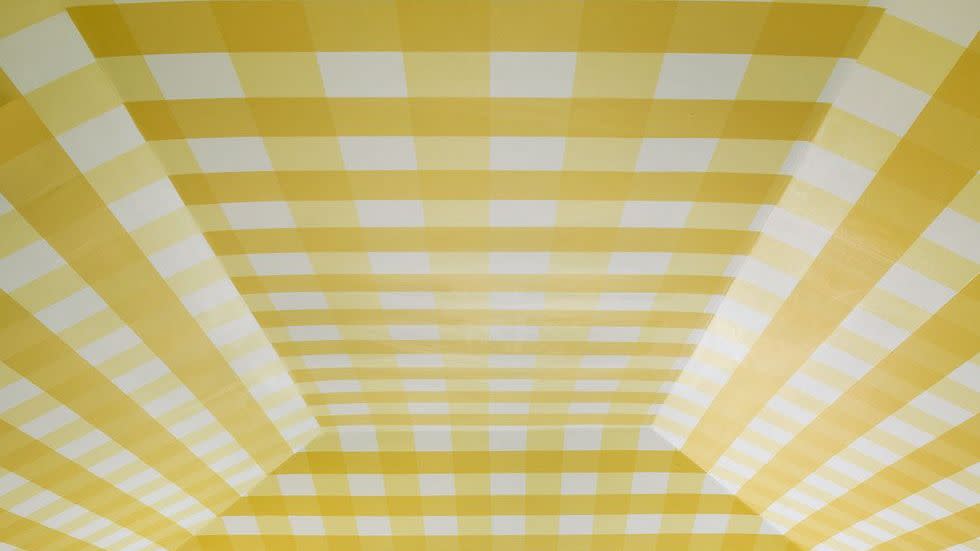
"Hearst Magazines and Yahoo may earn commission or revenue on some items through these links."
If you love to follow interior design trends and keep up with our own House Beautiful social media feed, then you know certain aspects of the traditional home aesthetic—namely the more avant-garde, European-influenced ones—are having a bit of a renaissance. (Think circus tent stripes and indoor trellises.) Though these design features certainly aren’t passing trends, their recent popularity shows that people who may not have ties to the design world are rediscovering them. Evidence of the mainstream interest in the eccentric side of traditional design is popping up everywhere from social media to iconic show houses, and tented rooms are the latest to get unexpected attention.
Tented rooms have a very long interior design history, as they first entered the public eye in the early 19th century. “With regards to tented rooms, inspiration can be taken from Napoleon [Bonaparte’s] beautiful striped campaign tent,” Rosie Bossom of Rosanna Bossom Limited, a London-based interior design firm, tells House Beautiful.
When Bonaparte and his wife, Joséphine, took ownership of the Château de Malmaison in 1799, they hired two architects—Charles Percier and Pierre Fontaine—to redesign their new home, according to The Malmaison Museum. The design duo took to Bonaparte’s own military tent for inspiration, lining the counsel chamber walls with fabric and transforming Joséphine’s bedchamber to look like a circular tent, with red and gold sheets hanging up to serve as walls. After the renovation was complete, this bold and expensive-looking tented design became a beloved interior design choice well into the 19th century.
And while today’s tented rooms certainly don’t take inspiration directly from Bonaparte, many of the reasons for their popularity haven’t changed. We spoke to three designers to get an understanding of why tented rooms are having a moment and to learn how you can pull off the regal yet playful style in your own home.
Designed by Mally Skok
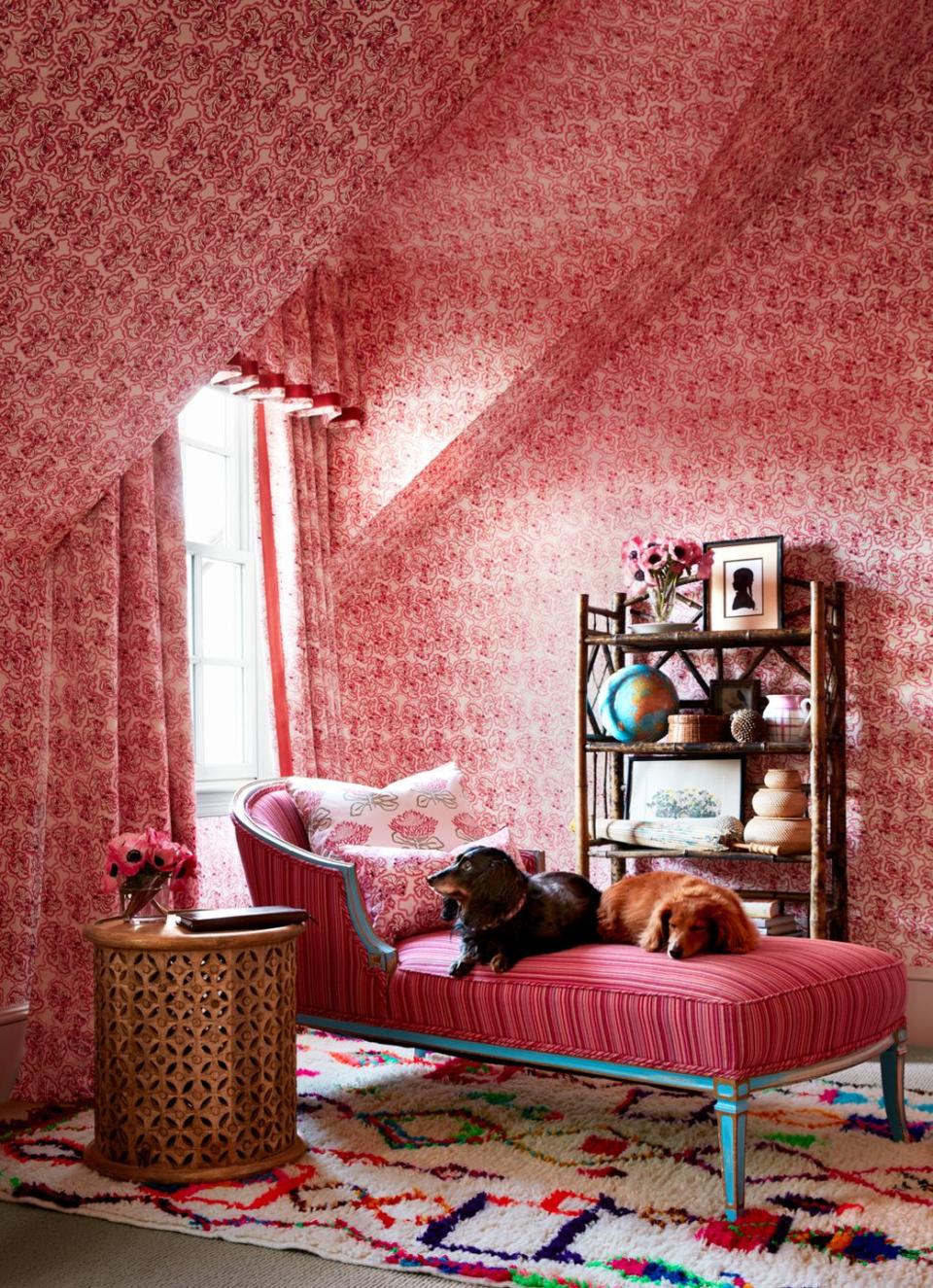
Designed by Mally Skok
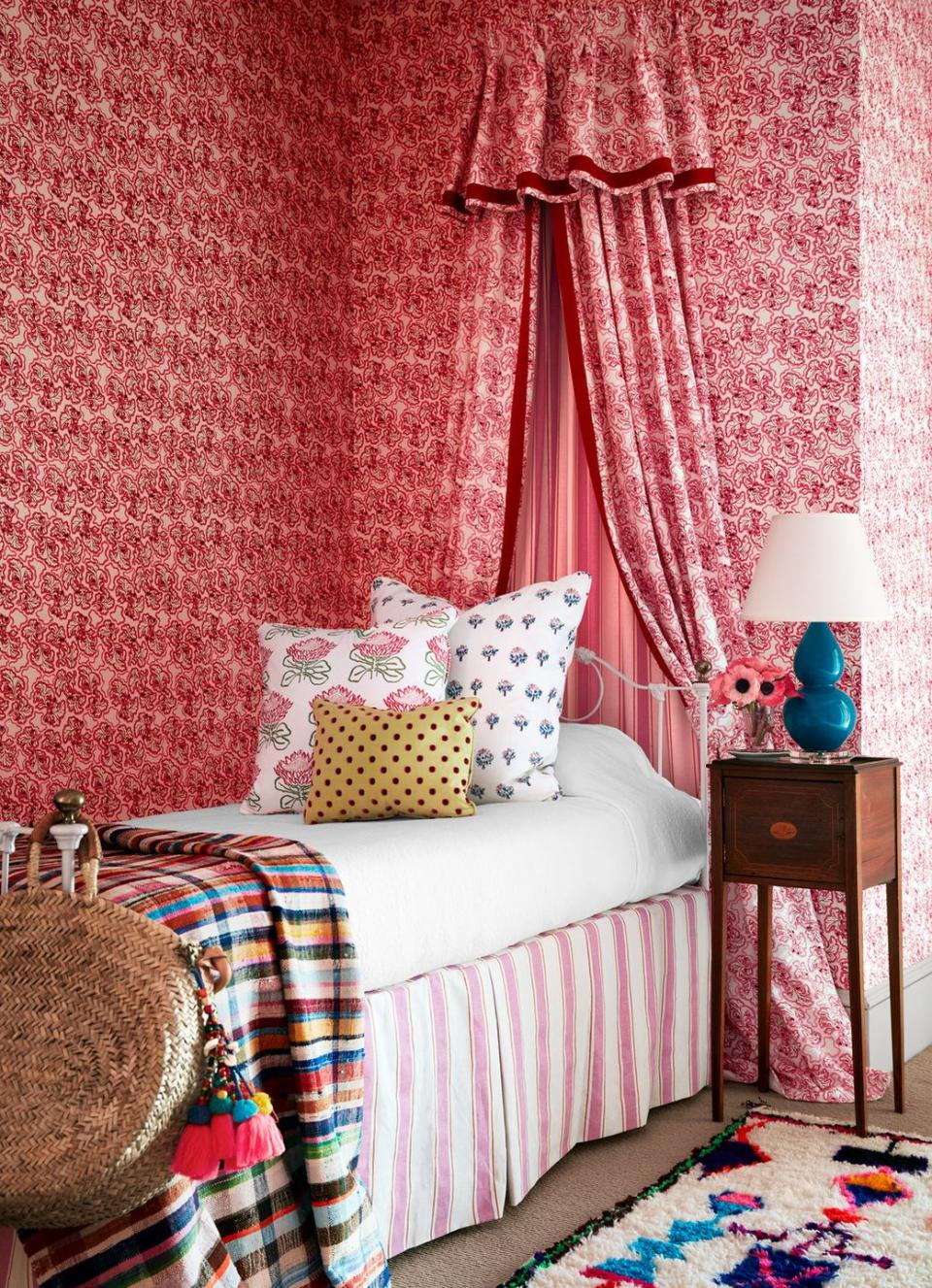
Why Are Tented Rooms Having a Moment?
Looking at the other traditional styles that are back in the spotlight, it’s kind of obvious why tented ceilings are gaining traction: Maximalism is back, baby! Did it ever really leave? No, not for some. But before the Covid-19 pandemic in 2020, whites, grays, and Marie Kondo’s less-is-more philosophy were all the rage. And while that’s still the preference for some, as many people started spending more time in their homes than ever before, they realized those alarmingly bare walls didn’t really promote a cozy, intimate vibe or support the escapism they were seeking. Designer Elizabeth Hay thinks this is why traditional design is coming back: It feels warmer and brings more beauty into everyday life. “People are becoming not so afraid of making bolder statements in the design of their homes,” she says.
Ceilings in general are finally getting the attention they deserve, and tented ones specifically evoke “childhood dreams and memories of adventure and escape to another world,” Bossom explains. “It can feel either incredibly cozy or light and airy—in other circumstances, it can feel like you’ve entered a room full of jewels and treasures ready to be discovered.” When it comes to pure feelings, designers believe it’s this playfulness combined with historical elegance that makes a tented room so desirable.
Designed by Sean Scherer
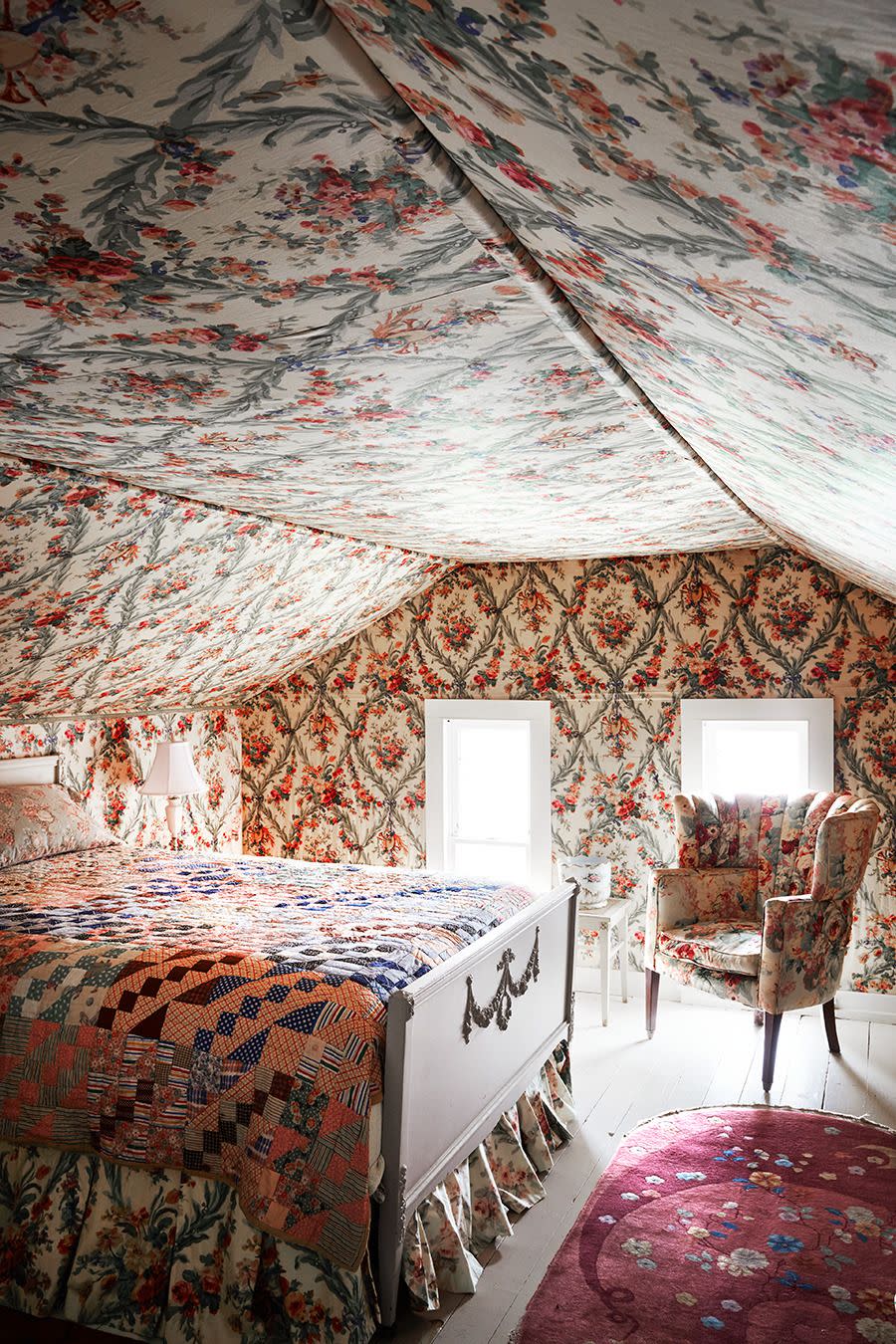
Designed by Sean Scherer
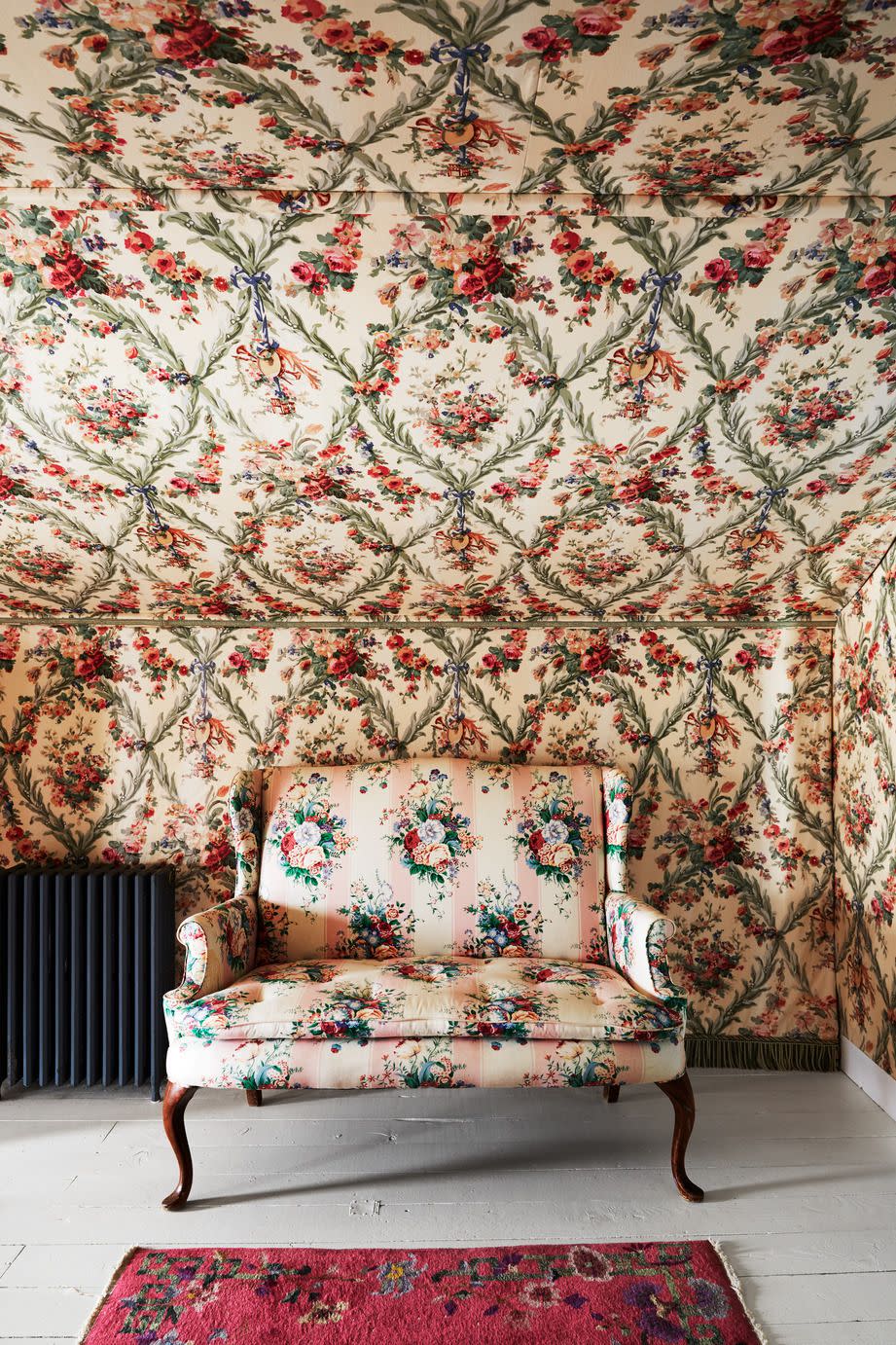
However, purely from a design perspective, tented ceilings are a great way to add much-needed dimension to a room or hide imperfections. “Tented ceilings can add the illusion of height or space to a room, and can also hide a multitude of sins, whether that be structural problems or uneven finishes,” Bossom says. They can also make the transition from the indoors to the outdoors less harsh, as designer Leandra Fremont-Smith points out. “Instead of it being an abrupt transition, you have more of this invitation to the outside,” she explains.
How to Use a Tented Ceiling in Your Space
Though the classic tented room is constructed with fabric, you can capture the same look by using wallpaper, paint, or even clusters of lights throwing shadows against that fifth wall, Fremont-Smith says. If you don’t want to hire a designer to come in and make the tented room for you, we recommend sticking with wallpaper or paint. Making one with fabric is a very in-depth process that relies heavily on templating and sewing for the tent to look right, Fremont-Smith says, so she wouldn’t suggest trying it out if you’re a beginner.
Once you’ve decided which method you think you want to go with for your tented room, there are a few things these designers consider before you make up your mind: ceiling height, lighting, color, and environment. If you have low ceilings and want the tented look, you should go with the painted or wallpaper methods to give the illusion of added height; drapery might hang too low in the space. However, if your ceilings are on the higher side, Bossom says it well: “Then it seems a shame not to use fabric that can be draped.” That’s the best way to get the dreamy, cozy look.
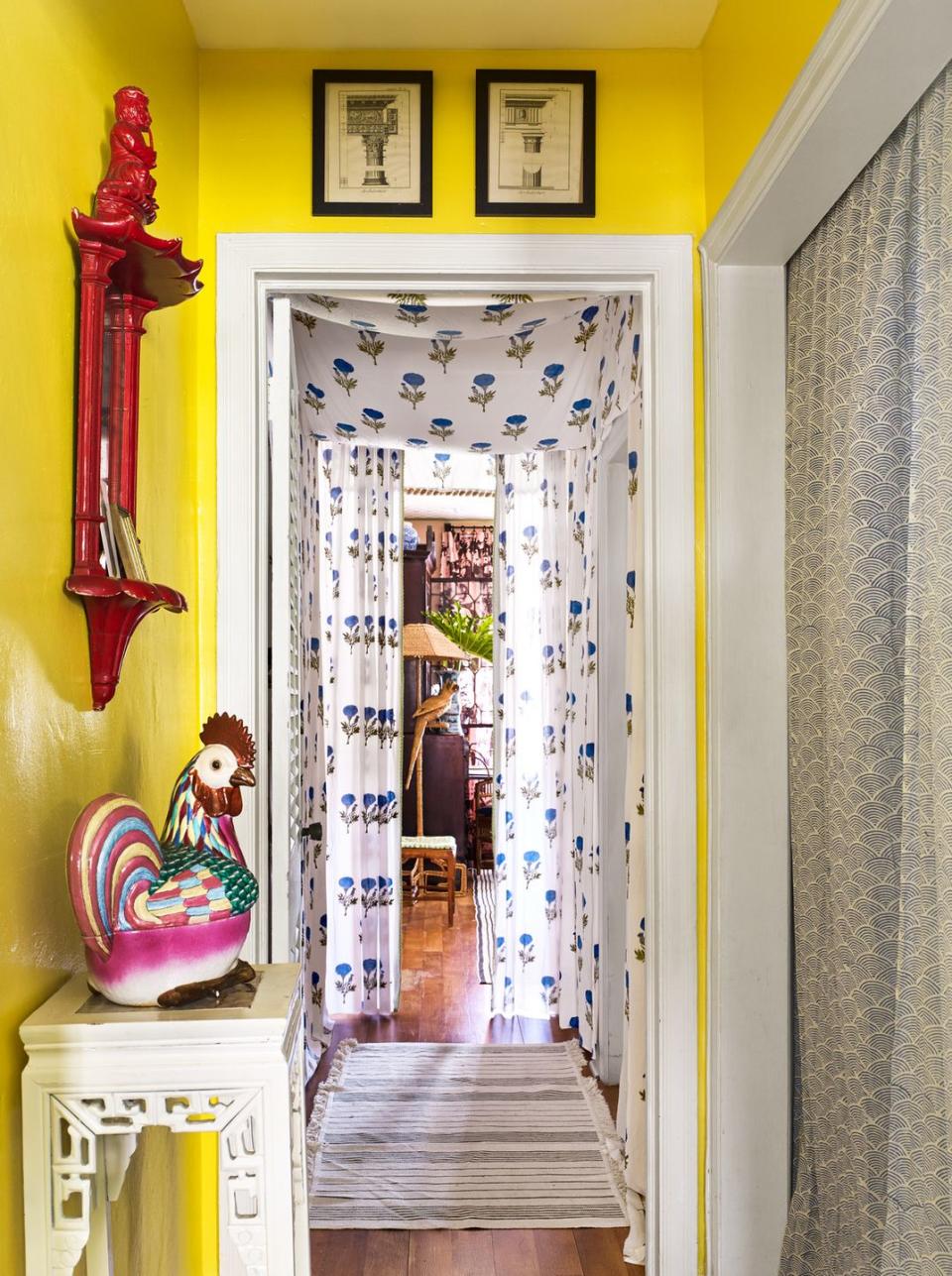
Figuring out how to light a tented room may seem a bit daunting at first, but the solution is really quite simple: All three designers suggest installing a pendant in the center of the room. Part of the intimacy of a tented room comes from the way the light reflects off the sides and walls, so you definitely don’t want to use a downlight, Fremont-Smith says. If a pendant won’t work for some reason, use wall sconces instead.
Though ceiling height and lighting are more technical, the color palette of your space can really make or break this style. Bossom explains that you shouldn’t rely on dark colors in a tented room because the space might feel too heavy, and Hay cautions about using too many patterns and geometric shapes because then the room can feel too busy and can have a dizzying effect. And while tented rooms tend to lean more on the vibrant side of the color spectrum, the three designers agree that you don’t need to love bright hues to have a tented ceiling. “It just doesn’t have to be so loud,” Fremont-Smith says. “It can be very quiet in the sense of the color palette but still provide such an amazing effect.”
While any room can technically become a tented room, there are a few spaces that simply don’t lend themselves to the idea: the kitchen and the bathroom. Both Fremont-Smith and Bossom explain that the environment of these two places tends to be damp and odorous—two less-than-ideal conditions for drapery. While there are ways around this using wallpaper or paint, there are other spaces that support the style better, such as children’s rooms, sunrooms, and even entry halls. Anywhere clean and dry that could use a little whimsy, a tented ceiling will definitely do the trick.
Follow House Beautiful on Instagram and TikTok.
You Might Also Like

